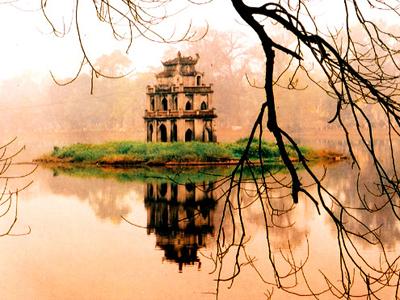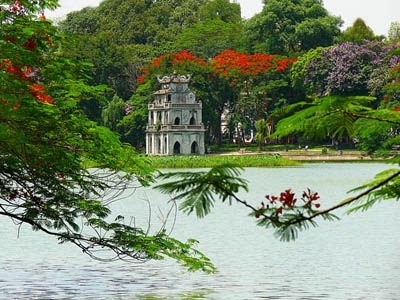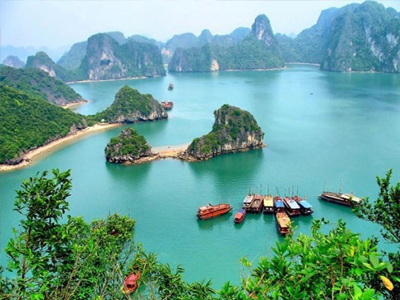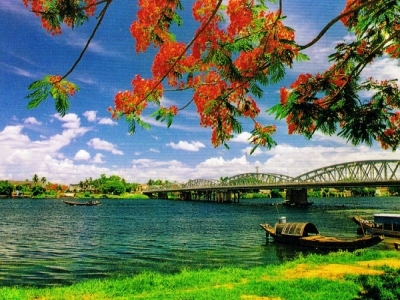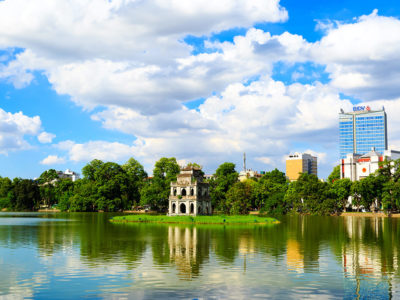Vietnam Travel Tips: A Beginner's Guide to Vietnam's National Day
On September 2nd throughout Vietnam, a nationwide celebration marking the anniversary of Vietnam’s August Revolution and declaration of independence takes place. This year, the anniversary marks a magnificent 70 years, so the already vibrant occasion takes on epic new proportions this year in what amounts to one of the country’s largest and most spirited occasions. If you’re lucky enough to be in Vietnam when it takes place, here’s what you need to know!
Why
Hanoi-Ho Chi Minh-5486Independence Day – like nearly every Independence Day around the world, for any country – is a big deal in Vietnam. Really understanding why the celebrations are so important to Vietnamese people, though, is a matter of knowing the history behind the holiday.
In a region of the world fraught with invasion, occupation, and colonialism, Vietnam stands out as having a particularly long and bumpy road to freedom. As the interface between East Asia and Southeast Asia, its strategic geographical location – not to mention the riches of its natural resources – has been sought after for centuries. They’ve been invaded or occupied for much of their history – first by the Chinese then by the Mongols, then the French, then the Japanese, and then the French again.
Vietnamese Independence Day marks the day when the revered revolutionary leader, Ho Chi Minh, seized power in the wake of Japan’s defeat in WWII. While the path to true independence from outside influence would remain a long one after that, it marked the turning point in what would eventually result in complete autonomy. It’s also one of the reasons that the Ho Chi Minh Mausoleum in Hanoi plays a central role in the festivities within the capital.
When
The path to Vietnam’s independence began with the August Revolution launched on August 14th, 1945. After a two week offensive, the Viet Minh Revolutionary Party seized control from the French throughout most of South, Central, and Northern Vietnam. On September 2nd in 1945, the leader of the Viet Minh, Ho Chi Minh, made his famous proclamation of Independence at Ba Dinh Square in Hanoi. Citing both the US and French Constitutions, he galvanized the country’s nationalist movement.
In commemoration of these events, Independence Day kicks off on the evening of September 1. Senior leaders throughout the country pay tribute to Ho Chi Minh, affectionately known as “Uncle Ho” with an incense ritual in the Ho Chi Minh Mausoleum in Hanoi. The following day, September 2, is when the bulk of festivities take place.
Where
While Independence Day is celebrated throughout the country, most of the action takes place in the country’s urban areas such as Ho Chi Minh City, Hanoi, and Danang. Anyone wanting to get in on the action will have no problem finding it in either of those cities. While Ho Chi Minh City is Vietnam’s largest city, Hanoi hosts the largest celebrations in the country, as it is the seat of the country’s government. For the occasion of the 70th anniversary, this includes a vibrant parade through Hanoi’s downtown district – including marching bands, performers and plenty of Vietnamese red and gold!
What
The morning of September 2nd usually commences with canon fire –so if you’re anywhere in the vicinity of the commencement ceremony, don’t plan on sleeping in!
Following the commencement ceremony, a massive parade is typically held. As Vietnamese Independence Day marks the eventual triumph of the country’s ruling party, both militaristically and politically, much of the parade involves showing off the country’s military hardware. In addition to showing off Vietnam’s Armed Forces and military might, the parade also involves a great deal of war veterans, workers, farmers, and ethnic minorities, and civil servants.
Capping off the day’s official festivities is a series of fireworks displays that taking place in urban areas throughout the country. After that, “unofficial” festivities, typically involving copious amounts of Bia Hoi take place.
Other Article:
- Laos Travel Tips:Top 10 Must-See Destinations in Laos
- Cambodia Travel Tips: Top 10 Attractions in Cambodia
- Vietnam Travel Tips: 5 Reasons You Should Visit Cu Chi Tunnels
- Laos Travel Tips: Visit Laos' 8 Most Unique Wats & Pagodas
- Cambodia Travel Tips: 5 (More) Things to See and Do in Siem Reap
- Laos Travel Tips: A Day in the Life of a Novice Monk in Laos
- Vietnam Travel Tips: Expert Travel Guide for Northern Vietnam
- Vietnam Travel Tips: Life Along the Mekong - The Cham Village
- Laos Travel Tips: 7 Things to Do in Vientiane
- Laos Travel Tips: 5 Best Restaurants in Luang Prabang
- Cambodia Travel Tips: Top 10 Temples In Cambodia
- Cambodia Travel Tips: Making the Most of the Angkor Temples
- Vietnam Travel Tips: What You Need To Know

